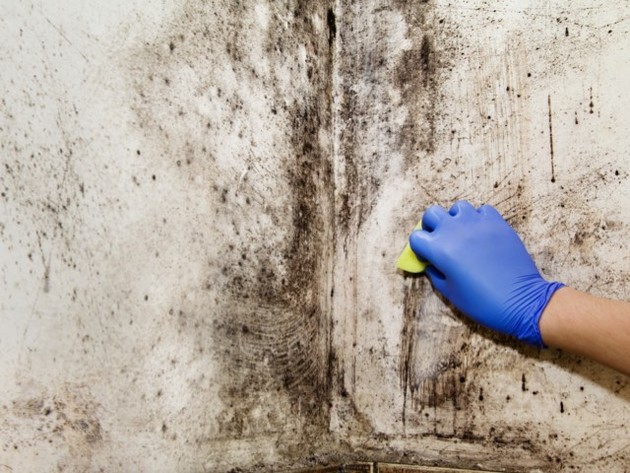
Hurricane Harvey in August 2017 established itself as the worst rainfall disaster in American history.
It dumped some 33 trillion gallons of water along the Gulf of Mexico. The Washington Post illustrated the enormity of the situation, plopping a giant cube on top of a map of Houston. In real life, 33 trillion gallons would equate to a cube measuring 3.1 miles on a side.
Flood waters eventually recede, but they leave behind, as The Atlantic magazine dubbed it, “the inglorious problem of mold.”
“Submerging a city means introducing new ecosystems of fungal growth that will change the health of the population in ways we are only beginning to understand. The same infrastructure and geography that have kept this water from dissipating created a uniquely prolonged period for fungal overgrowth to take hold, which can mean health effects that will bear out over years and lifetimes,” according to The Atlantic.
WITHIN 24 HOURS
The magazine noted the lingering effects of mold in New Orleans, 12 years after Hurricane Katrina, and in areas of Brooklyn, N.Y., five years after Hurricane Sandy.
Mold can take hold within 24 hours of a heavy rain, the Washington Post noted. Lightweight, pollen-like spores easily spread mold through the air, causing stuffy noses, irritated eyes, coughs or respiratory problems in people.
And the spores linger.
“Indeed, all mold needs to survive and thrive is moisture, oxygen, a surface to grow on and a food source. Molds feed on dead, moist organic matter, including leaves, wood, cloth, paper, even dust. Smaller than the head of a pin, spores can hang in the air for hours – where they can be breathed or ingested.”
But because even dead spores contain allergens, killing mold isn’t enough. “It has to be removed,” the Post noted, but getting all of it might not be possible.
Nick Gromicko, described as a mold expert and founder of the National Association of Certified Home Inspectors, said:
“Where homes have been in standing water for so long, the cure for most of these mold problems is going to be a bulldozer,” he said. “The homes are going to have to be razed.”
GUIDE TO MOLD CLEANUP
The U.S. Centers for Disease Control and Prevention and other federal agencies put together a “Homeowner’s and Renter’s Guide to Mold Cleanup After Disasters.” The guide notes that if your home was flooded but you couldn’t dry it within 24-48 hours, then you should assume you have mold growth.
“You may see or smell mold on clothing, drywall, furniture, cardboard boxes, or books, but it may also be hidden under or behind items like carpet, cushions, or walls.”
The guide recommends taking these steps before entering a moldy site:
• Protect yourself and loved ones against hazards. People with breathing problems such as asthma or who have weakened immune systems should stay away from moldy sites. Children should not take part in disaster cleanup work. Check for loose power lines or gas leaks. Make sure the electricity and gas are turned off. Look for sagging ceilings or floors or other structural problems. Watch out for wet, muddy or slippery floors.
• Protect your mouth and nose against breathing in mold: wear at least an N-95 respirator. If you plan to spend a lot of time removing moldy belongings or ripping out moldy drywall, wear a half-face or full-face respirator.
• Protect your skin. Wear protective gloves (non-latex, vinyl, nitrile, or rubber). Do not touch mold or moldy items with bare hands.
• Protect your eyes. Wear goggles that provide complete eye protection. Choose goggles designed to keep out dust and small particles. Safety glasses or goggles that have open vent holes will not protect you against dust and small particles.
• Protect yourself and loved ones. After you leave a mold site, shower and change your clothes. This will help you avoid carrying mold and other hazards back to your current living quarters.
If the mold-removal job is too big for you to handle, the guide suggests getting help from experienced and qualified professionals.
Specifically recommended are mold inspection or remediation professionals affiliated with or certified by the National Environmental Health Association (NEHA), the American Industrial Hygiene Association (AIHA), the Institute of Inspection, Cleaning and Restoration Certification (IICRC), or American Council for Accredited Certification (ACAC), “to inspect, repair and restore the damaged parts of your home.”
Your state also may regulate mold remediation.
